Travel around Setouchi on the Setouchi Shimatabi Line high-speed cruiser, the SEA SPICA
Discover
the beauty and allure
of the island archipelago.
Set sail for the sparkling blue waters
of Setouchi.
What is the SEA SPICA?
The SEA SPICA is a high-speed sightseeing cruiser that takes passengers on the Setouchi Shimatabi Cruise, a trip by boat around the beautiful islands of the Seto Inland Sea. The boat is specially designed and equipped for traveling to and from different islands, and offers its passengers a comfortable and fun marine journey.
The Setouchi Shimatabi Cruise operated by SEA SPICA takes passengers on a route that connects Hiroshima Port, the maritime gateway to Hiroshima Prefecture that can easily be reached from Hiroshima Station and Hiroshima City, and Onomichi, a city boasting a nostalgic townscape and the uniquely captivating scenery of the Seto Inland Sea.
Fully enjoy interacting with islanders and scenic views unique to a cruise, and experience attractions of Setouchi you’ve never known before.
The Setouchi Shimatabi Cruise operated by SEA SPICA takes passengers on a route that connects Hiroshima Port, the maritime gateway to Hiroshima Prefecture that can easily be reached from Hiroshima Station and Hiroshima City, and Onomichi, a city boasting a nostalgic townscape and the uniquely captivating scenery of the Seto Inland Sea.
Fully enjoy interacting with islanders and scenic views unique to a cruise, and experience attractions of Setouchi you’ve never known before.
Map of the cruise area
cruise area map
Two courses are available: The “Usagi Course”, which goes from Hiroshima to Onomichi, and the “Shimanami Course”, which goes from Onomichi to Hiroshima.
Both courses offer a choice of different ports for embarkation and disembarkation, allowing you to enjoy a cruise that suits your travel plans.
Both courses offer a choice of different ports for embarkation and disembarkation, allowing you to enjoy a cruise that suits your travel plans.
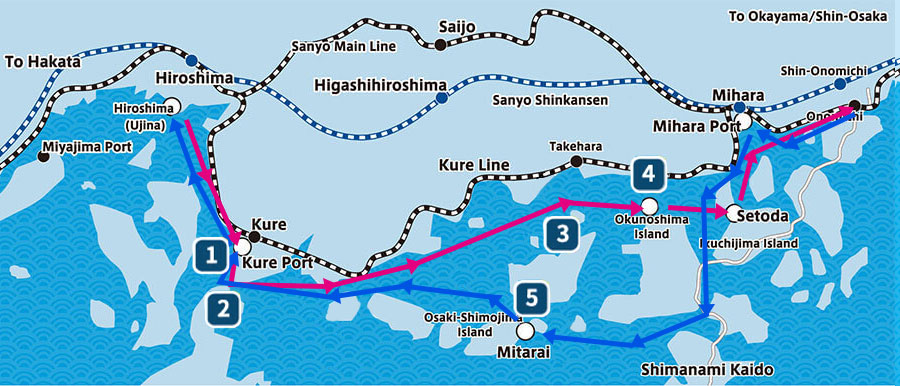
- Usagi Course
Hiroshima to Onomichi - Shimanami Course
Onomichi to Hiroshima
Kure Bay Ship Cruise
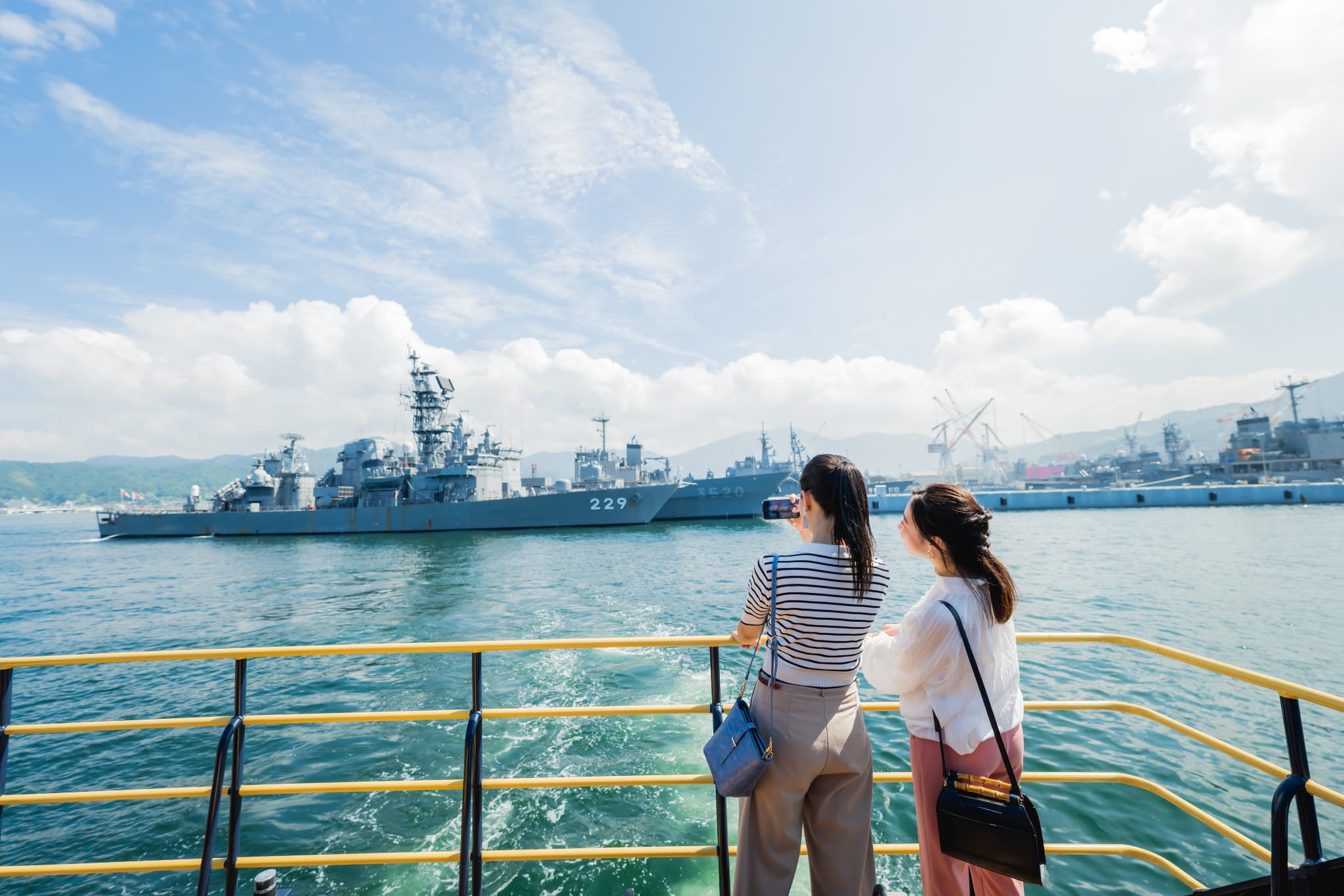
The Kure Bay area (focused on Kure Port) was once known as the largest naval port in the Orient.
It was particularly famed for building the Yamato, the world’ s largest warship at the time.
As the current home for a base of Japan’ s Maritime Self-Defense Force,
cruises by here provide close-up views of numerous submarines, destroyers and other Self-Defense Force vessels.
Depending on the time of day, meanwhile, passengers may also witness the raising and lowering of the naval flags on these ships.
Ondo-no-seto Strait
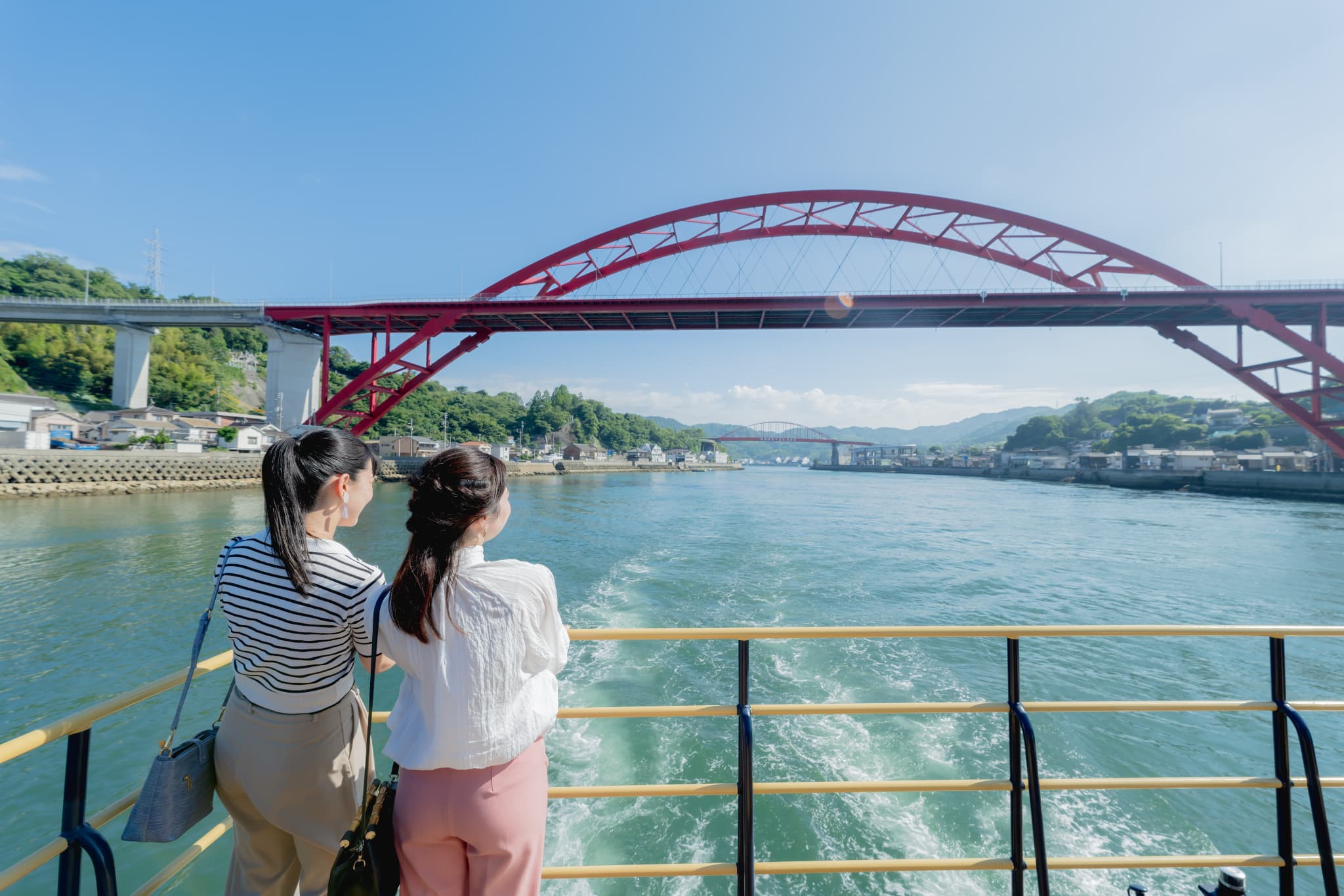
The Straits of Ondo reach between Japan’ s main island of Honshu and Kurahashi Island in the Seto Inland Sea.
The passage is said to have been opened by Taira-no-Kiyomori (famed military leader over 1,000 years ago).
Two deep-red arch bridges span this passage (Ondo Bridge and No. 2 Ondo Bridge), combining to form a source of true scenic beauty.
Due to the swift currents and narrow width, these straights are renowned as a difficult stretch to navigate.
Located nearby is Ondo-no-Seto Park, where spring brings the blooming of some 2,300 cherry and 8,300 azalea trees.
This furnishes yet another exquisite view from the SEA SPICA deck.
Setouchi Gunkanjima Island
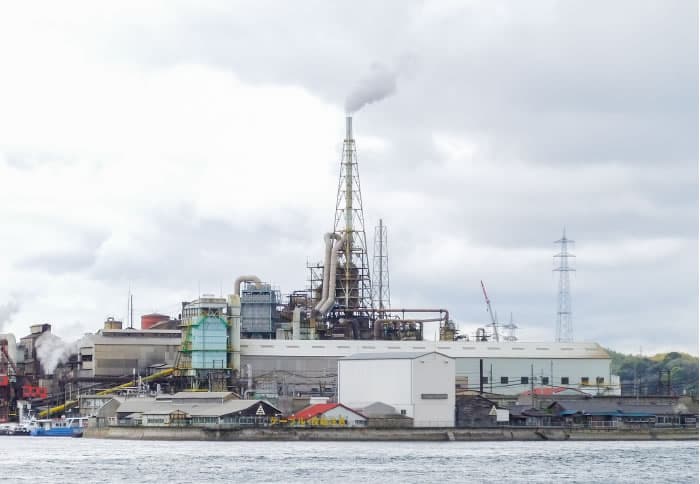
Chigirishima Island, located off the coast of Takehara City in Hiroshima Prefecture, is an unusual island whose surface is completely covered by a lead smelting plant.
Its distinctive appearance has earned it the nicknames “Gunkanjima of the Seto Inland Sea” and “Living Gunkanjima”.
It is the only plant in Japan that smelts lead from domestically mined ore, and more than 40% of Japan’s lead is smelted on this island.
Okunoshima Island

Okunoshima Island enjoys special fame as the “Rabbit Island” of Setouchi.
True to that nickname, over 600 rabbits are estimated to inhabit the isle, and can be encountered in most all areas.
In the past a poison gas plant was operated here, with the government deleting the island from all published maps.
Traces of those days remain, fostering a unique and thought-provoking atmosphere.
Osaki-Shimojima Island
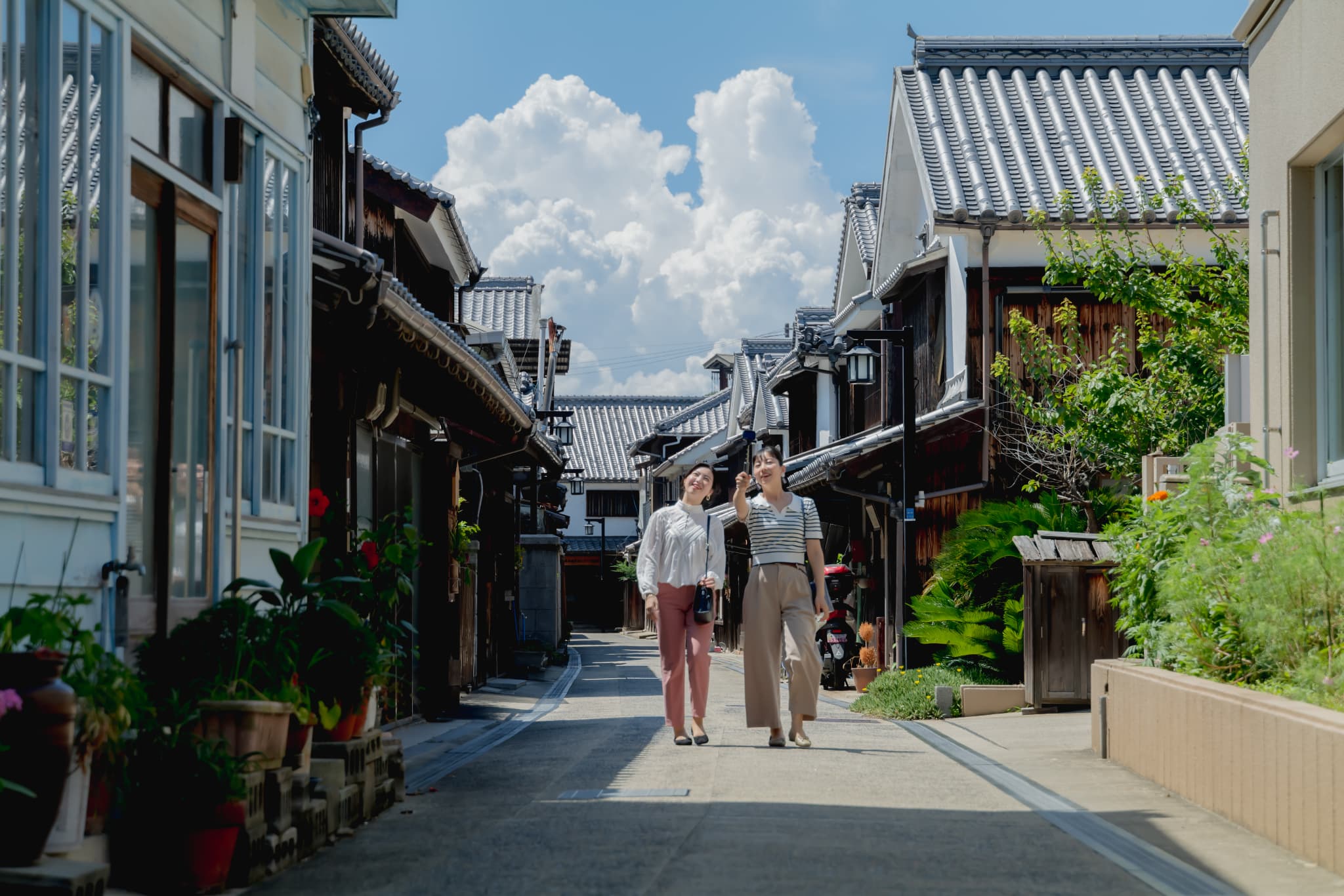
Scene from Mitarai, located on Osaki-Shimojima Island ‒ the fourth island along Tobishima Sea Route in the Sea of Aki.
This port town retains clear vestiges of the Edo Period, when vessels waited here for favorable winds and tides.
There are stores of various sizes, teahouses, shrines, a seawall and other structures dating from that era.
From the Hill Overlooking History Park, a site rich in historical ambience,
photos can capture an impressive range of the scenic islands of Setouchi Inland Sea below.
There is also a traditional inn and boathouse later renovated as a cafe,
offering leisurely passage of “island time” at its finest.
-
Usagi Course
Hiroshima to Onomichi- 8:45
- Depart from Hiroshima Port
- 8:53
- Arrive at/Depart from Prince Hotel
- 9:20
- Arrive at/Depart from Kure Port
- View naval ships at JMSDF Kure Naval Base (from cruiser)
- Ondo-no-seto Strait (from cruiser)
- Setouchi Gunkanjima Island: Chigirishima Island (from cruiser)
- Okunoshima Island (Go Ashore: Play with rabbits / 50 min.)
- 12:10
- Arrive at Setoda Port
- 12:45
- Arrive at Onomichi Port
Passengers can choose the port of departure and return. -
Shimanami Course
Onomichi to Hiroshima- 13:45
- Depart from Onomichi Port
- 14:15
- Arrive at Mihara Port
- 14:20
- Depart from Mihara Port
- Shimanami Cruise
- Osaki-Shimojima Island (Go Ashore: Walk around Mitarai District / 50 min.)
- Ondo-no-seto Strait (from cruiser)
- View naval ships at JMSDF Kure Naval Base (from cruiser)
- 17:35
- Arrive at/Depart from Kure Port
- 18:02
- Arrive at/Depart from Prince Hotel
- 18:10
- Arrive at Hiroshima Port
Passengers can choose the port of departure and return.
